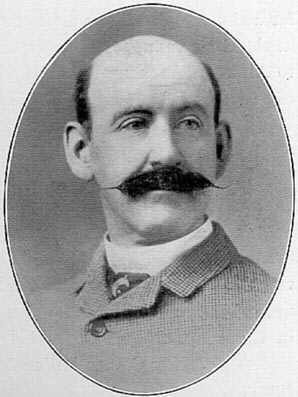The Story of Colonial Mexico City

Dr. Scott Birdseye is the Rufus Palmeroy Scholar in Pan-International Historitical Studies at the Montsylvania College of Agricultural Technology Design Arts. His menagerie includes two giraffes, a condor, twelve different species of monkey and a salamander named Clem.
Peace in Colonial Mexico City was a product of the system of social order based upon economics and racial relations. Division defined the social structure, ethnic and economic division between the ruling elite and the plebian subjects, and racial division within the plebian lower classes. As the wealthy Spanish ruling class formed only a small percentage of the population as a whole, the elite used governmental regulations and politically based legal system to maintain a high degree of official separation between the races which made up the lower classes.
Fearing for loss of control, the elite used lower class division as a means to ensure continuation of their own power and to ensure greater stability within society. Racial division and upward economic mobility, while maintaining the social order upon which the elite based their domination, also increased random, sporadic violence between racial groups in the lower classes, diminishing the effectiveness of the system for maintaining overall social order.
Colonial Mexico City was characterized by racial diversity and by a high degree of interaction and intermarriage between different ethno-linguistic groups. The early racial division concerned only Spanish and Indians, however, later institutionalized slavery defined the three main racial groups in Mexico as Africans, Spanish and Indians.
While a wide variety of racial identifications existed to distinguish people whose ancestry crossed the clearly established lines of race, initial Spanish political rulings overlooked the more complex racial identities present. Within the intermediate ethnicities there existed a lack of definitive methods of racial identification, blurring and obscuring the once clear borders of race.
In the daily life of the castas, race was not an important issue, and racial identity tended to be ascribed only by interaction with governmental institutions. Strict categorization was unnecessary in plebian life, where loyal affiliation involved family and neighborhood rather than race or class. Spaniards, both Criolo and Peninsulares were generally the only group concerned with strict records of ancestry and racial purity. Thus, it was only in these groups, which formed the elite, that exact racially identity was known.
For the plebian elements in society, fixed racial identity was unimportant, and it was common for an individuals race to change, due to both changing economic status and to the differing opinions of governmental recording agents.
Spanish distaste for the castas was common, and aversion quickly evolved into fear, fear which was amplified by the fact that the ruling elite were in the minority. The Viceroy of New Spain declared that mestizos, mulattoes and free blacks were dangerous and implemented a series of policies designed to halt social unification of the underclass. Conspiracies by Africans in 1608 and 1612 only furthered Spanish fear and desire to control the commoners. It was legally forbidden for Africans and anyone of even partial Spanish blood to take up residence in Indian villages.
Despite these ordinances, interracial socialization, particularly in Mexico City’s pulquerias and gambling dens continued. Through people of different races interacted regularly, different standards applied in the legal arena. Castas were subject to harsher laws and economic regulations than were Spaniards. Indians were still required to pay tribute, and mestizos were often subject to the Repulica de los Indios. Thus, the plebian classes had many divisions under the law, divisions which eventually evolved into de facto separations within the lower class. People of the lower classes however, continued to use the Spanish legal appeal system, illustrating a recognition of the Spanish law and its institutions.
The plebeians saw the legal distinctions as valid in many cases, and followed them as was expected under the Patron-Cliente System. The commoners viewed the rulers as their Patrons, who would protect and provide for them, and in exchange the commoners understood their obligation to obey Spanish law.In economics, like law, racial identity became a way for the elite to secure division amongst the lower classes.
Labor and types of available employment were tied to race, as Indians were still forced to provide encomienda labor and castas generally were limited by the occupations of their families. Thus, occupation provided a way to create and perpetuate separate and distinct racial identity. With the constant silver shipments to Spain, money was rare in Colonial Mexico, and what cash was available was concentrated in the hands of the elite. Accumulation of liquid assets was nearly impossible for non-Spaniards, and any wealth was in the form of land or goods. Upward social mobility, while difficult, was accomplished in Colonial Mexico through economic means, ensuring that within the non pure Spanish population racial identity could change.
Thus, while the different races were divided, within individual ethnicities, loyalty to the race was unknown, as racial identity could change through economic means. The Patron-Cliente System dominated racial mobility, as economic mobility often depended upon the willingness of the elite population. This system created an inherent instability within Mexico City’s population. Elite patrons were required, within the confines of the system, to provide economic protection for the commoners in order to insure social stability.
Food scarcity and price increases were seen by the lower class as a failure of the rulers to meet their obligations, and in such situations, the plebian masses saw obedience as unnecessary. The lower class often used the threat of riots and violence as a means to manipulating the bureaucracy to get better or fairer treatment under to law. Conditions of this sort in Mexico City in 1692 became so intolerable for the lower class that they were able to unite and, through a massive riot, threaten to terminate the rule of the elite.

Plebian unity, however, was short lived, and division within the lower classes, fuelled by racial distinctions, brought about the end of the riot and the reestablishment of the elite control. After the ferocity of the riot of 1692, the Spanish elite reiterated and expanded upon their policy of racial division as a means to ensure their own political and economic domi-nance.
In the end, internal division within the lower class made radical social or political change in Mexico an impossibility. While the system of division based upon racial identity did enable the elite to maintain their control over the political and economic systems of Colonial Mexico City, it did little to maintain peace within the city.
Personal violence and crime created by the divisions were un-abated, and riots and violence by the lower class, though unsuccessful in bringing about political and economic change, disrupted daily life and the social order within the city. In one respect the system was successful, in that it enabled the elite to maintain control, however, the elite, through their own system, failed to provide true stability and safety for the commoners in the manner of a proper Patron.
